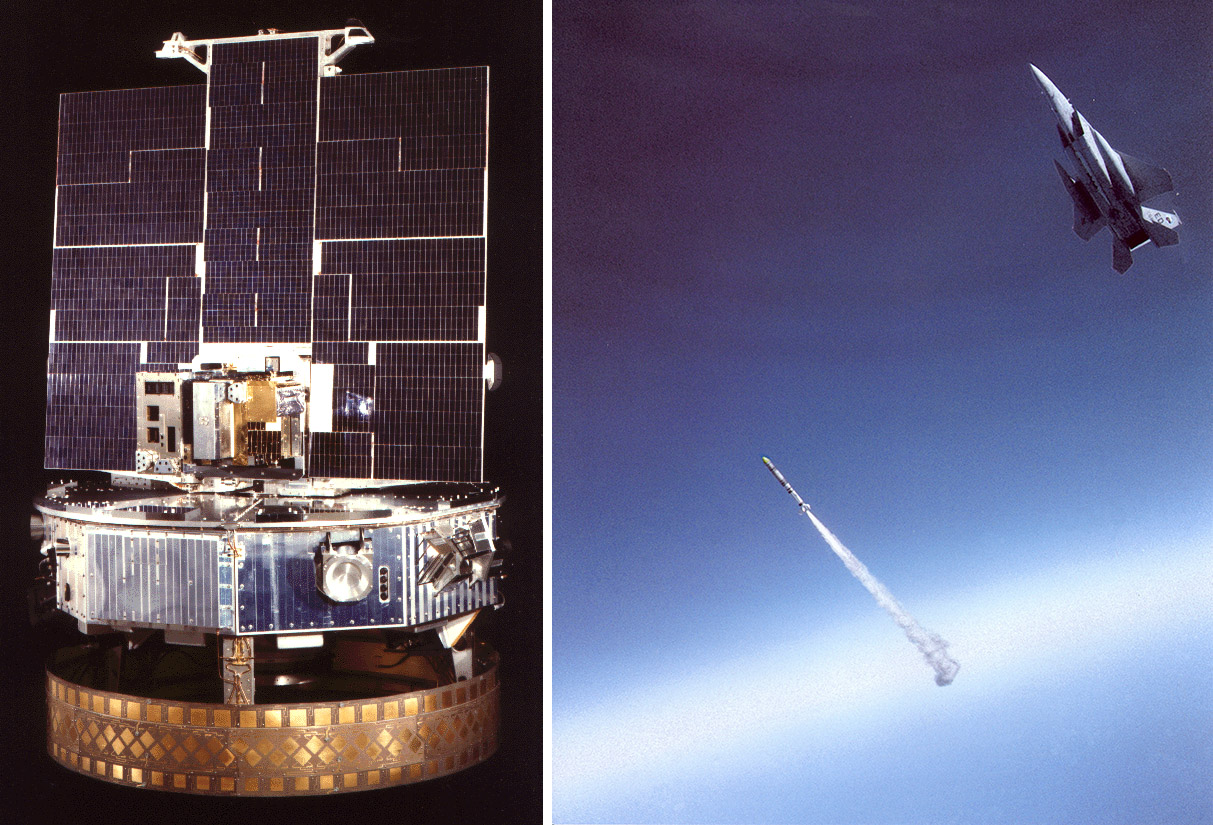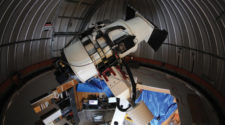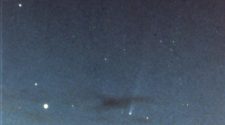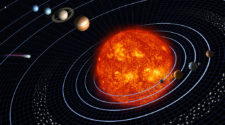FEBRUARY 23, 1988: David Levy obtains the final visual observation of Comet 1P/Halley during its 1986 return, using the 1.5-meter telescope at Catalina Observatory in Arizona. The comet was located 8.0 AU from the sun and appeared at 17th magnitude.
FEBRUARY 24, 1979: The U.S. Defense Department satellite P78-1 is launched from Vandenberg Air Force Base in California. One of P78-1’s instruments was the SOLWIND coronagraph, which detected ten comets between 1979 and 1984, nine of which were Kreutz sungrazers and the first of these being the first comet ever discovered from space. SOLWIND continued to operate up until the time P78-1 was deliberately destroyed in September 1985 as part of an Anti-Satellite weapon (ASAT) test. The first SOLWIND comet is a future “Comet of the Week” and Kreutz sungrazers as a whole are the subject of a future “Special Topics” presentation.

FEBRUARY 25, 1976: Comet West 1975n passes through perihelion at a heliocentric distance of 0.197 AU. Comet West, which is next week’s “Comet of the Week,” was one of the brightest comets that appeared during the second half of the 20th Century, and I personally consider it the best comet I have ever seen.
FEBRUARY 27, 1826: An Austrian army officer, Wilhelm von Biela, discovers a comet which is soon found to be identical to comets that appeared in 1772 and in 1805-06. Comet 3D/Biela, as this comet is now known, was last week’s “Comet of the Week” and is a classic example of a comet’s splitting into two and then disintegrating. It is the parent comet of the Andromedid meteor shower in November.
FEBRUARY 27, 1843: The Great Comet of 1843 passes through perihelion at a heliocentric distance of 0.006 AU. It was a Kreutz sungrazer and is a future “Comet of the Week;” Kreutz sungrazers as a whole are the subject of a future “Special Topics” presentation.
FEBRUARY 28, 1998: Comet 55P/Tempel-Tuttle passes through perihelion during its most recent return at a heliocentric distance of 0.977 AU. Comet Tempel-Tuttle is the parent comet of the Leonid meteor shower in November, which has produced some of the strongest showers in recorded history. The relationship between comets and meteor showers is the subject of a future “Special Topics” presentation.
More from Week 9:
Comet of the Week Special Topic Bonus Content Free PDF Download Glossary
Ice and Stone 2020 Home Page


